By Kim Hyelin and Hahm Hee-eun
Photos = Jeon Han
Video = Lee Hana, Choi Tae-soon
Busan | July 30, 2018
Busan was once the capital city of Korea. During the Korean War (1950-1953), Busan was the provisional capital of the country for 1,023 days, setting up a base for refugees from all across the Korean Peninsula.
Walking along the streets of Busan today, one can easily notice several road signs that say, imsisudo (임시수도), meaning "provisional capital." Busan’s history as a provisional capital and the life of refugees during the Korean War can still be felt through the remaining cultural heritage sites here and there across Busan. In January, eight of these Busan cultural heritage sites made it onto a tentative lists of UNESCO World Heritage sties, marking the first time that some sites from Korea’s 20th-century modern history has made it onto such a list.
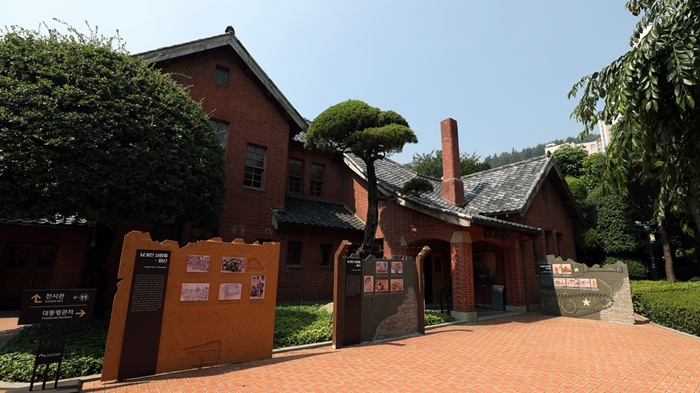
The Presidential Residence of the Provisional Capital was the president's office during the Korean War, equivalent to Cheong Wa Dae today.
The Provisional Capital Memorial Hall & Government Complex
When war broke out, Seoul was occupied, and so the government transferred the capital to Busan. The Presidential Residence of the Provisional Capital, which is now the Provisional Capital Memorial Hall, played the role that Cheong Wa Dae plays today for around three years, before the armistice agreement was reached. The building has become a symbolic spot where major decisions about Korea’s modern history, concerning defense, diplomacy and politics, were made.
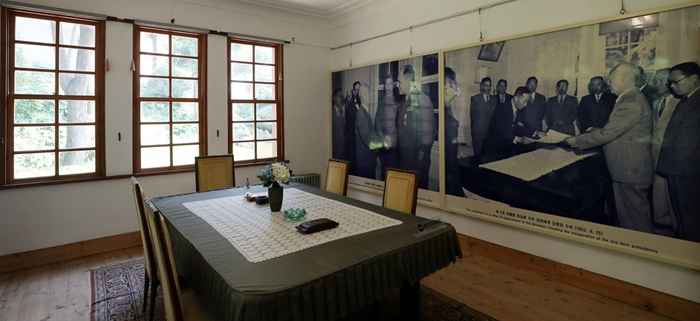
The living room of the Presidential Residence of the Provisional Capital is fully restored at the Provisional Capital Memorial Hall.
The building, which shows a mixture of Western and Japanese styles of architecture, was initially built in 1926 as an official residence for the colonial governor of Gyeongsangnam-do Province. Now, the building is used as the Provisional Capital Memorial Hall since its reopening by Busan Metropolitan City in 1984. On the ground floor, the living room and an office are as they were when the building was used as the presidential residence, and on the second floor, war relics along with some of the belongings of Korea’s first President, Rhee Syngman, are on display.

Day-to-day affairs of the government were carried out at the Provisional Capital Government Complex, now a museum at Dong-A University.
Looking down from Memorial Hall, the Provisional Capital Government Complex, which is now the Seokdang Museum at Dong-A University, can be seen. The Government Complex is where eight major government institutions, including the Office for Government Policy Coordination and the Prime Minister’s Secretariat were located. At the time, the day-to-day management of the government was carried out here. Today, the building is used as a university museum, but there are many important cultural heritage items still on-site, such as two national treasures, or gukbo (국보), and 12 other official treasures, bomul (보물), are preserved in the building. On the third floor, you can notice the roof structure and the building floor plan of modern times. The Provisional Capital Presidential Residence and the Government Complex are representative pieces of modern architecture that keep intact the socio-political changes that have taken place across Korea’s modern history.
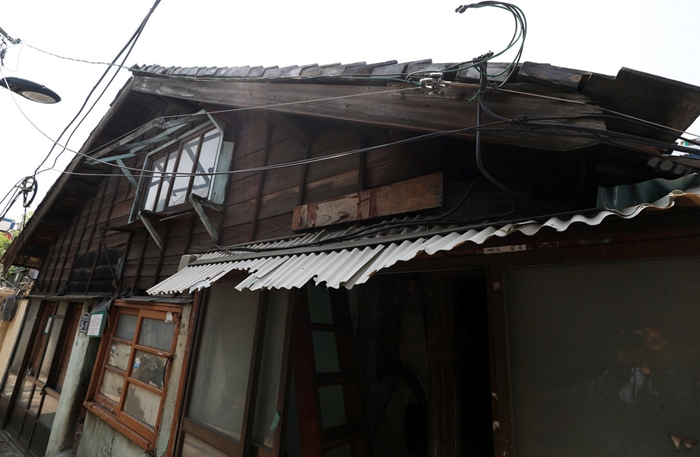
The somaksa is where cows and steers went into quarantine during colonial times. The photo shows the remaining roof of the somaksa holding pen at Somak Village in Uam-dong, Busan.
Somak Village in Uam-dong, a haven for refugees
Somak Village in the neighborhood of Uam-dong is a part of town where old houses are clustered back-to-back, so narrowly that only one person can pass through the passages in between. Looking up from the passages, the remaining half of an old barracks can be seen. The barracks, which are called the somaksa, is where the cows and steers were quarantined before they were shipped out to Japan during colonial times. Due to the Hungnam evacuation in December 1950, in which U.N. and South Korean forces and North Korean civilians from the port of Hungnam in North Korea were transported en masse to Busan, there weren’t enough facilities to accommodate the increased numbers of refugees swarming across the city. Consequently, refugees used the wooden boards in Somak Village to make partition walls so that they could reside in the barracks. Recently Somak Village’s value as a cultural heritage site of modern history was formally acknowledged, and, as a result, it is has been designated as a registered cultural heritage site.
Busan Architectural Culture Coordinator Kim Seung-hoe said, "When people come to see the somaksa, they feel sorry for the tragic situation of the refugees during the Korean War, but if you look at it from the other side, this place also shows that even in horrible situations, refugees have never given up and that they continued with their lives. One must remember that this is the source of spirit that led to the development of today’s Korea. Somak Village in Uam-dong is a cultural heritage site that shows the lives of the people during those times, and it will be added to the tentative list of UNESCO World Heritage sites this year."
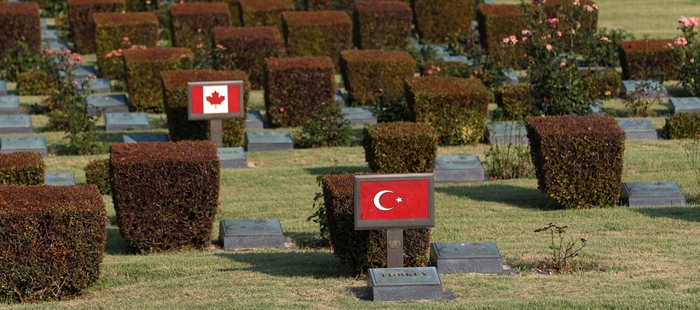
The U.N. Memorial Cemetery in Korea is the only officially acknowledged U.N. Memorial Cemetery in the world. Some 2,300 soldiers from 11 countries are buried there.
U.N. Memorial Cemetery in Korea, where war veterans rest in peace
“For your tomorrow I gave my today,” says a war veteran in a video at the U.N. Memorial Cemetery in Korea (UNMCK).
The UNMCK, where U.N. war veterans that fought for freedom and peace on the Korean Peninsula rest in peace, has been continually visited by both Korean and non-Korean visitors who have placed wreaths there, even today, despite record-breaking heat this summer.
The UNMCK is the only officially acknowledged U.N. Memorial Cemetery in the world. After the establishment of the U.N. Command in 1951, the National Assembly of Korea permanently donated this land to the U.N. in 1955. There are currently 2,300 soldiers from 11 countries, including the U.K., Turkey and France, buried here, and the grounds are managed by the Commission for the UNMCK in 11 countries.
The curator of the Refugee Heritage Listing Team at the Busan Metropolitan City, Ha Byung Um, said, “Here lies sacrificed spirits that have devoted their youth to fighting for peace. They give us the message, during times when international society is crying with one voice for peace, that war should never be repeated.”
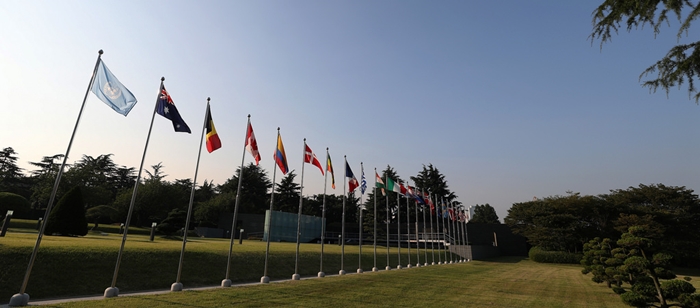
The flags of countries that participated in the Korean War are hoisted above the U.N. Memorial Cemetery in Korea.
The Busan cultural heritage sites that are on the tentative list of UNESCO World Heritage sites are: the Provisional Capital Presidential Residence & Government Complex; the UNMCK; Busan Port 1st Pier, which was the port for U.N. troops that transported military supplies; the Korea Meteorological Administration building, which helped the military and refugees through daily meteorological observations; the U.N. Ground Forces Command, which was the main command headquarter at the Nakdonggang River Defense Line; the U.S. Embassy & Information Service, which functioned as a door to diplomatic and cultural exchanges; and, finally, the Hialeah Compound, where the U.S. military was stationed. In total, there are eight sites.
Busan Metropolitan City and the Busan Tourism Organization are planning various promotional projects, such as training cultural heritage commentators and establishing educational sessions for the people, in order to accomplish their goal of having the eight cultural heritage sites in Busan registered on the final UNESCO World Heritage list that is due to be completed by 2025.
kimhyelin211@korea.kr